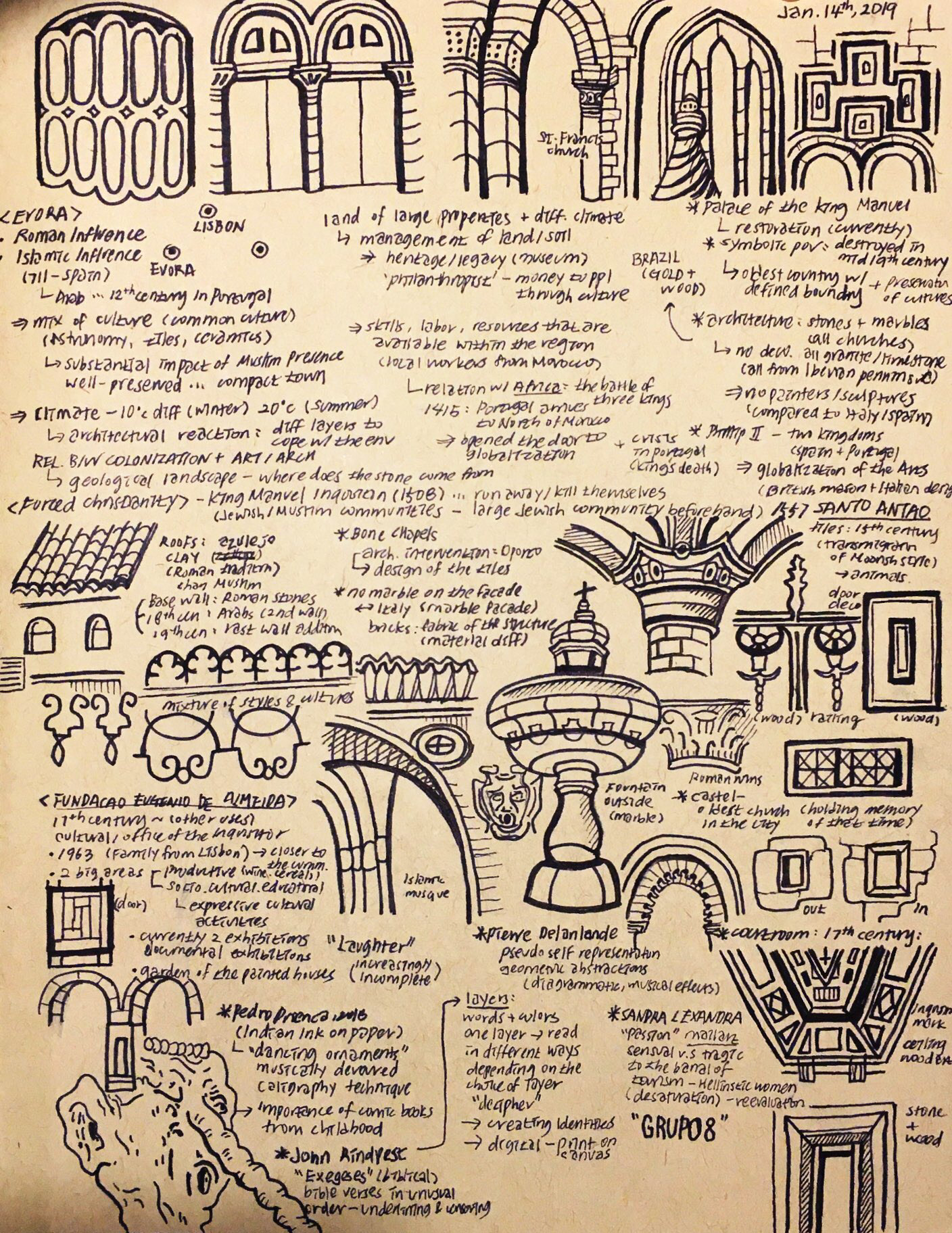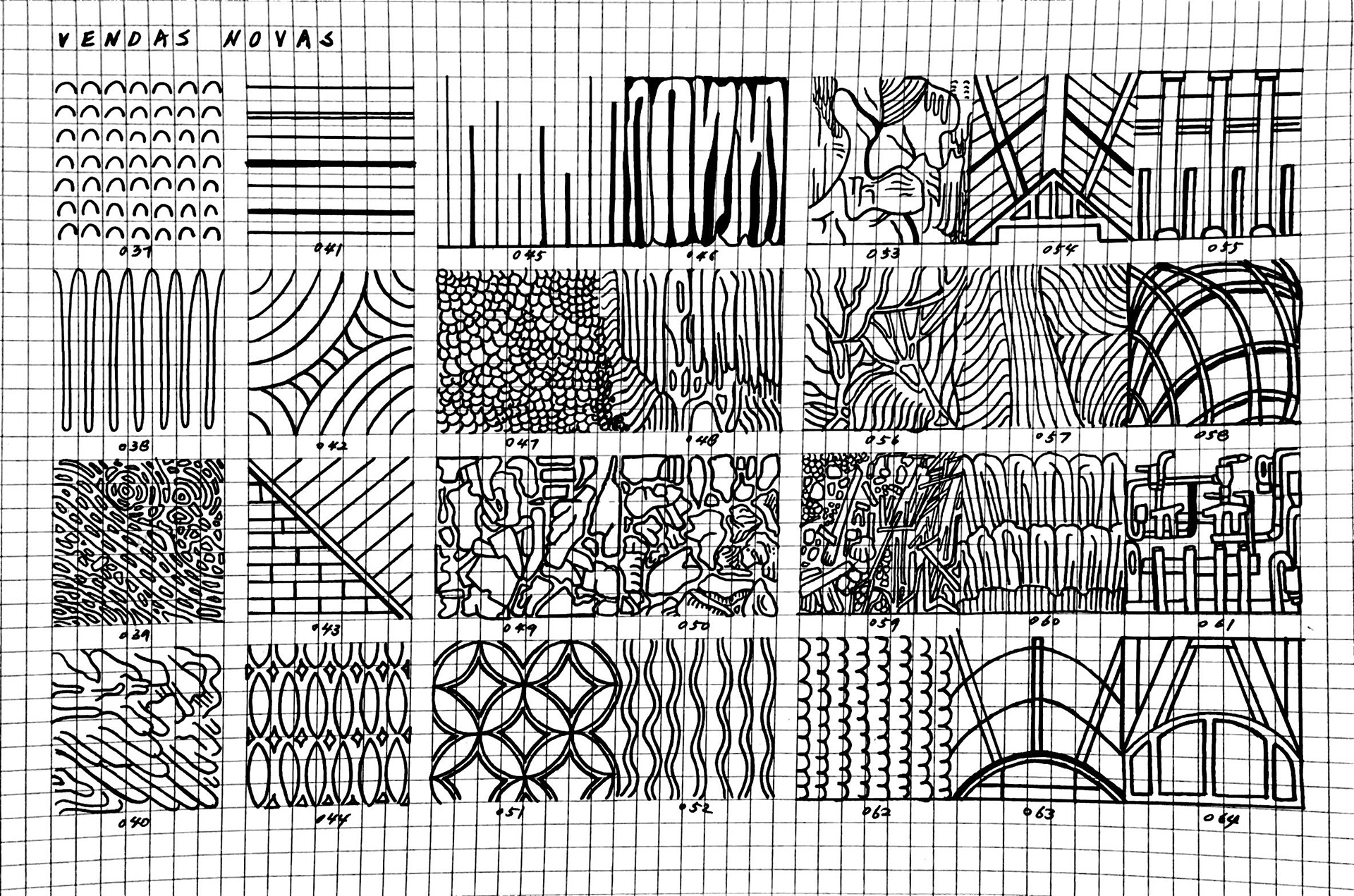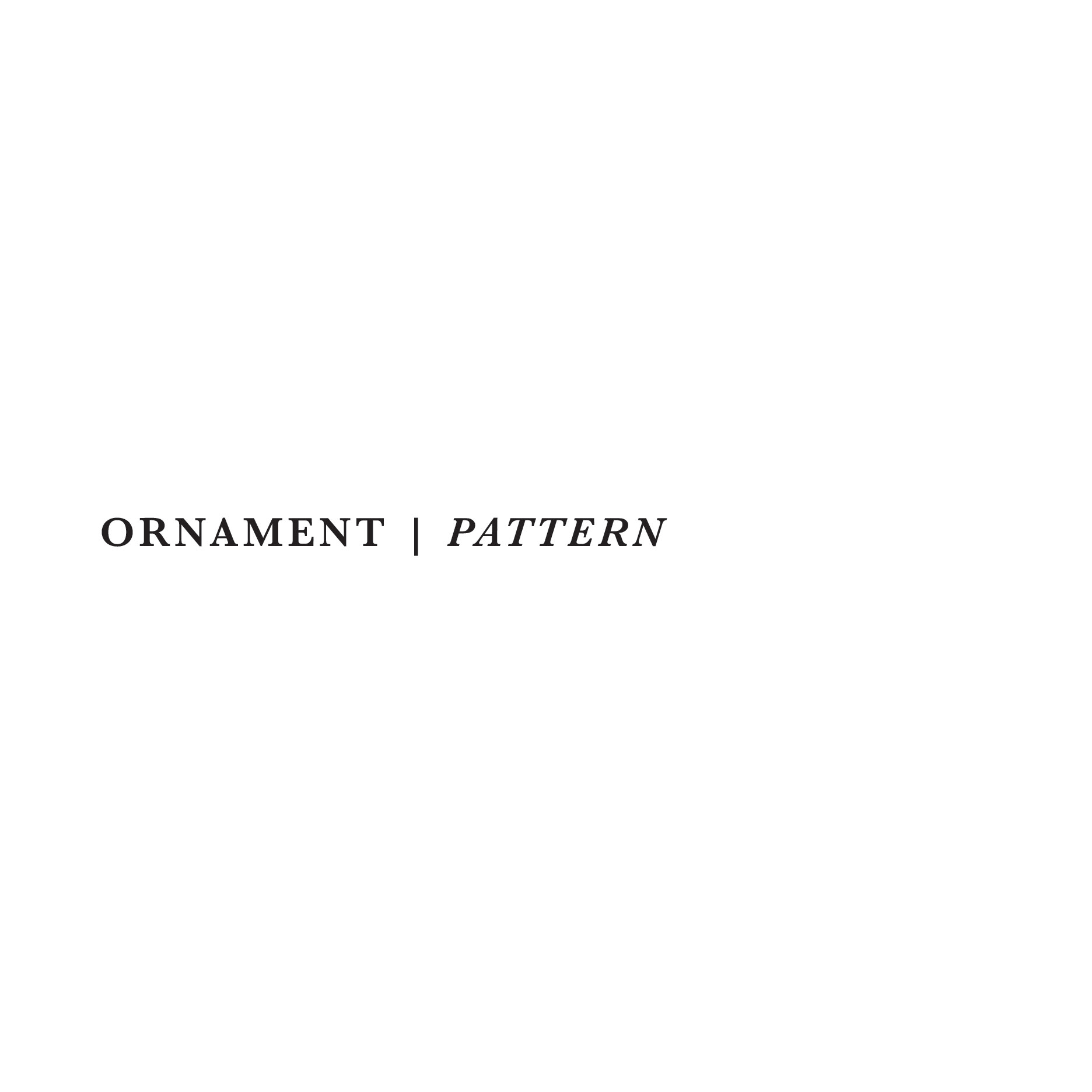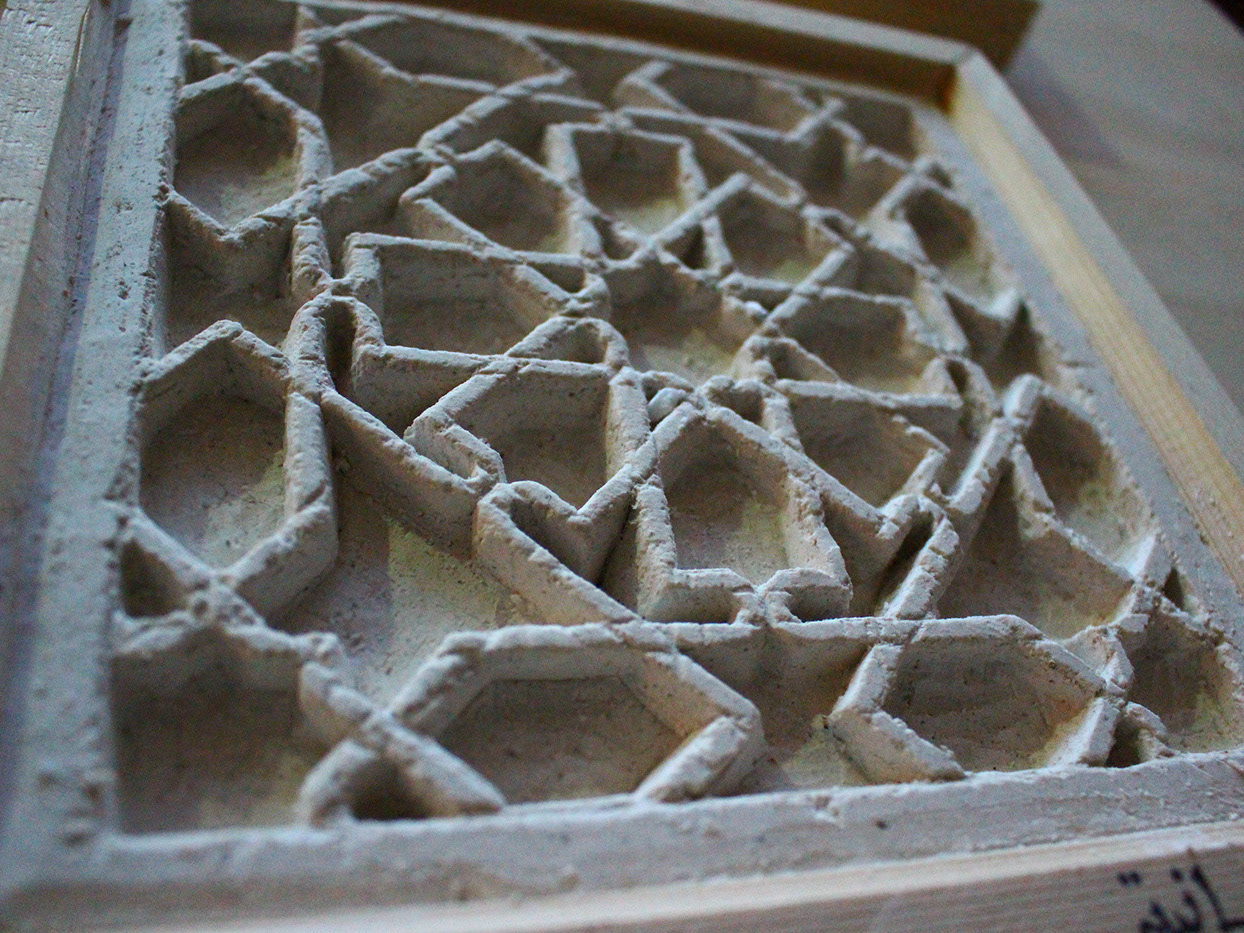MAPPING PORTUGAL
COEXISTENCE - PATTERNS AND ORNAMENTS
Walking on a street of Portugal, one encounters many different cultures and history through various patterns and ornaments. One can easily trace Portugal’s past of being both the colony and the colonizer of other nations as the center of international trade by looking at a single tile that contains Roman, Indian, and Moorish influence on its style. Portugal’s ornaments display the country’s unique culture and history that is shaped by its ecosystem and historic interactions with other nations. Ornamentation in Portugal, therefore, can act as a visual key that guides people through its history and culture.
Portugal’s wide variety of ecosystem and climate conditions allows such ornamentation to coexist with diverse patterns through a common thread of logic and reasoning from nature. And such coexistence allows one to question the fundamental relationship between ornaments and patterns. Patterns can be defined as decorative design that can be found in a natural setting without a human intervention in its formation. In contrast, ornamentation occurs through a human interference with an artificial employment of a decorative element onto a surface of either natural or synthetic material. Ornamentation is often associated just with a decorative visual quality that is not necessarily related to the functional aspect of an object or architecture. However, not a single ornamentation exists as a mere means to adorn or to embellish. Ornamentation always bring symbolism and semantics onto the surface through its employment. Within the process of deriving meanings that can be collectively shared, ornamentation in Portugal finds its links to patterns in nature.
Ornaments are inherently bounded by the law of nature in its making and maintenance as it deals with a material surface that has specific texture and erosive quality with the existing climate condition. The way that ornament gets employed always encounter the material resistance which leads to a particular way of carving patterns and tools to use. Ornaments and crafts, therefore, often share the way nature deals with its own materiality in its application and deterioration over time. Historically across different cultures, nature also has been the main inspiration in developing ornamentation to embody larger metaphoric references in building national identity or religious symbols. For instance, the symmetry and golden ratio that is found in nature develops into a specific order that governs the arrangement and organization of the Romanesque and Arabic ornamentation that exists in Portugal. Through such link between ornaments and nature, ornamentation and patterns innately share a common groundwork.
Portugal shows such linkage between ornaments and patterns through its changing quality and types of ornamentation across its regions that have different climatic conditions and ecosystem. For instance, the coastal region of Portugal shares a blueish color palette that is largely influenced by the ocean. The coastal ornamentation also shares the same erosion process with the wind that carries the salty ocean wind. The interior regions of Portugal, on the other hand, have more elaborative and detail-oriented ornamentation that contains a lot of symbols of nationalism to convey its identity across the country. Ornamentation, thus, consider geographical setting and the climatic conditions in its development which creates further connection to the patterns in nature.
* This project has been featured on: RISD Global Website


PROCESS 1. Data Collection | Analysis












PROCESS 2. Developing Visual Language









MAPPING PORTUGAL through ornaments and patterns
















Installation in Mouraria Creative Hub
Rua dos Lagares 23, 1100-022 Lisboa, Portugal
2019










